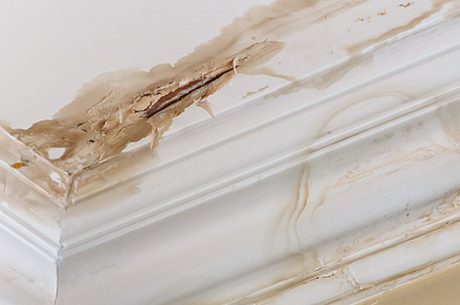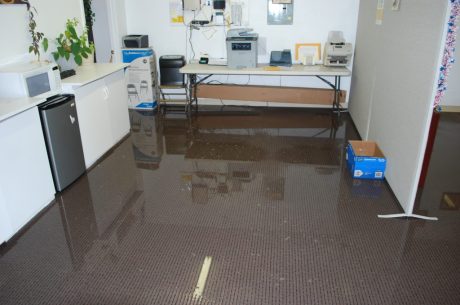Table of Contents
Solutions for Water Leak From the Ceiling After a Shower
Few things are more frustrating than discovering a water leak from the ceiling after taking a shower. Not only is it inconvenient, but it can also lead to serious damage if left untreated. Whether it’s a small drip or a steady stream of water, addressing the issue quickly is essential to avoid long-term problems such as mold growth, ceiling damage, and even structural issues.
In this blog post, we’ll walk you through the most common causes of shower-related ceiling leaks and provide a step-by-step guide on how to fix them before they cause more extensive damage.
What causes Water Leak From the Ceiling After a Shower?
Water leaks from the ceiling after a shower can be caused by several issues, often related to plumbing or structural problems. Here are the most common causes:
- Faulty Shower Pan or Tub
If your shower pan or bathtub has cracks or is not properly sealed, water can seep through and leak into the ceiling below. Over time, even minor damage to these components can lead to significant water leakage. - Damaged or Loose Tile Grout
Tiles in the shower are supposed to keep water in the enclosure, but damaged, cracked, or missing grout between the tiles can allow water to escape behind them. This water can trickle down and eventually find its way into the ceiling. - Leaky Drain or Plumbing Pipes
If the pipes connected to your shower drain are loose or deteriorating, water may escape when the shower is in use. A faulty drain connection can lead to leaks that go unnoticed until they show up as water stains on the ceiling below. - Worn Out Caulk
Caulk seals the edges of the tub, shower, and fixtures, preventing water from escaping. If the caulk is old, cracked, or missing in some areas, water may leak through and cause damage to the ceiling below. - Overflowing or Clogged Shower Drain
A slow or clogged drain can cause water to pool around the base of the shower or tub. This pooling water might spill over the edges or get trapped behind walls, eventually making its way to the ceiling below. - Faulty Shower Valve
A leak inside the wall caused by a faulty shower valve or connection can allow water to travel through the walls and end up in the ceiling below.
How to Fix Water Leak From the Ceiling After a Shower
If you’ve noticed water leaking from your ceiling after a shower, it’s essential to address the issue quickly to prevent further damage. Follow these steps to identify the source of the leak and fix it effectively:
Step 1: Locate the Source of the Leak
Before you can fix the leak, you need to determine where it’s coming from. The leak could be caused by a variety of factors such as damaged tiles, faulty plumbing, or a compromised shower pan.
Inspect the Shower: Look for visible signs of damage, such as cracks in the shower pan, missing grout, or gaps in the caulking around the shower and tub.
Test for Drain Leaks: Plug the drain and fill the shower or tub with water. If the ceiling leaks even when the shower is not running, the issue is likely with the drain or plumbing connections.
Check for Pipe Leaks: If the leak only occurs when the shower is running, the problem may be related to pipes, valves, or fixtures.
Step 2: Turn Off the Water Supply
Before making any repairs, turn off the water supply to the affected area to prevent further water damage. This will also allow you to work safely without the risk of flooding.
Step 3: Fix the Shower Pan or Tub
If the shower pan or tub is cracked or damaged, you’ll need to repair or replace it.
For Minor Cracks: Use a shower pan repair kit, which typically includes epoxy or sealant designed to fix small cracks or holes.
For Major Damage: If the damage is significant, you may need to replace the shower pan or tub entirely, which might require professional assistance.
Step 4: Regrout or Recaulk the Shower
If the grout or caulk is damaged, replace it to ensure water stays within the shower enclosure.
Remove Old Grout: Use a grout removal tool to scrape out the damaged or cracked grout between the tiles.
Reapply New Grout: After removing the old grout, apply new grout to seal the spaces between the tiles.
Recaulk the Edges: Remove old caulk around the tub, shower, and fixtures using a utility knife. Reapply a fresh bead of waterproof caulk to seal any gaps.
Step 5: Repair or Replace Leaky Plumbing
If the plumbing is the source of the leak, it may involve repairing or replacing components like the drain or shower valve.
Fix Drain Leaks: If the drain connection is loose or damaged, tighten the fittings or replace the drain flange and gasket.
Replace a Faulty Shower Valve: If the valve is leaking behind the wall, you may need to access it by cutting into the drywall. In most cases, replacing the valve will stop the leak.
Step 6: Repair the Ceiling
Once the leak is fixed, assess the ceiling for damage. Water-damaged drywall or ceiling panels may need to be replaced.
Remove Damaged Ceiling Material: Cut away any water-damaged drywall or plaster. Allow the area to dry completely before proceeding.
Patch the Ceiling: Replace the damaged section with new drywall or plaster. After installing the new material, sand it smooth, prime, and paint to match the surrounding ceiling.
Step 7: Monitor for Future Leaks
After making repairs, monitor the area to ensure the leak has been successfully fixed. It’s a good idea to check for any signs of moisture or water stains after a few showers.
When to Call a Professional
While some leaks can be handled with DIY repairs, more severe leaks involving significant plumbing issues or structural damage should be addressed by a professional. If you’re unsure of the cause or the repair process, calling in a restoration expert will help ensure the problem is resolved properly.
PuroClean Emergency Recovery Services in New Jersey, with their years of experience and IICRC certification, stand as your reliable partners in home restoration. For immediate assistance with ceiling leak repair and water damage cleanup in New Jersey, contact us on (877) 750-7876.
By following these steps, you can stop a shower-related ceiling leak in its tracks and prevent further damage to your home.



